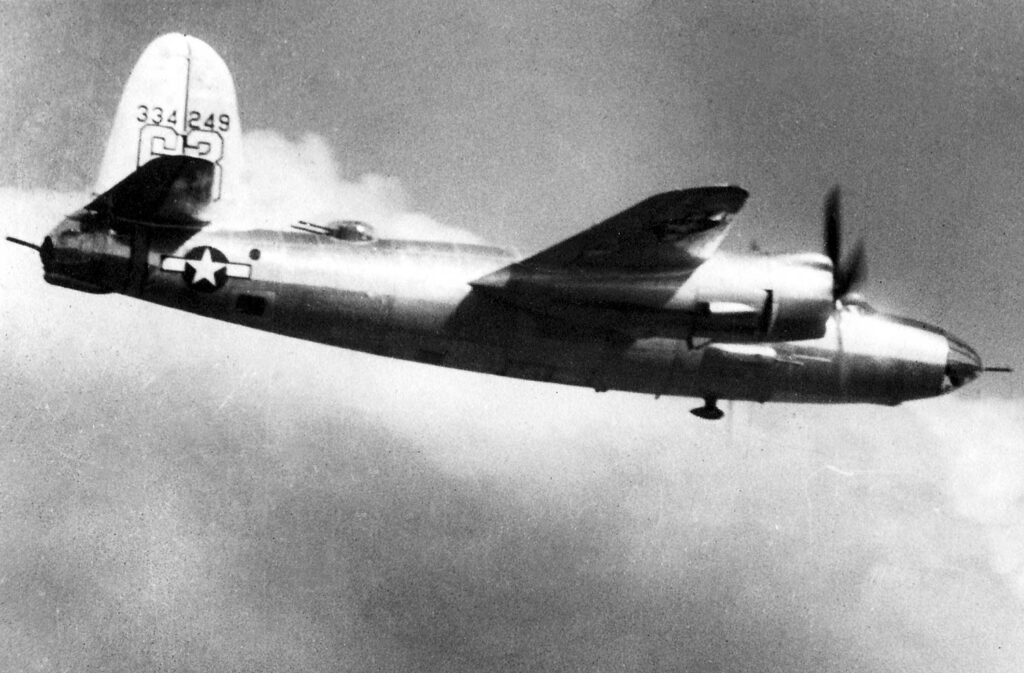The Martin B-26 Marauder, a WWII medium bomber, known for its speed and payload capacity, powered by two Pratt & Whitney R-2800 engines, and distinctive for its high wing loading.
This article provides an in-depth look at the Martin B-26 Marauder, a notable American medium bomber of World War II. It discusses the aircraft’s development, innovative design, impressive performance, and significant military use, shedding light on its impact and legacy in the realm of military aviation.
The Martin B-26 Marauder was a key American medium bomber during World War II. Renowned for its speed and bomb-carrying capacity, the B-26 played a significant role in various theaters of the war. This article aims to explore the development, design, operational performance, and combat role of the B-26 Marauder, providing a comprehensive overview of its service history and legacy.
History of the Development of the Martin B-26 Marauder
The Martin B-26 Marauder’s development was initiated in response to a 1939 request from the United States Army Air Corps for a new medium bomber. The request emerged from the growing tensions in Europe and Asia, highlighting the need for advanced military aircraft capable of performing in high-speed bombing missions.
The program was launched by the Glenn L. Martin Company, with the first prototype taking to the skies on November 25, 1940. The primary objective in developing the B-26 was to create a fast, high-altitude bomber that could outpace enemy fighters and deliver a significant payload. The aircraft did not receive a NATO nickname, as it was developed before NATO’s establishment.
The development of the B-26 Marauder was influenced by the evolving needs of aerial warfare and the strategic importance of air superiority during World War II. Its design and performance were envisioned to meet the demands of modern air combat and strategic bombing missions.
Design of the Martin B-26 Marauder
The Martin B-26 Marauder featured a robust and advanced design for its time. It was powered by two Pratt & Whitney R-2800-5 radial engines, each generating 2,000 horsepower (1,491 kW). The aircraft was known for its high wing loading, which contributed to its high-speed capability but also made it demanding to fly.
The B-26 had a length of 58 feet (17.7 meters) and a wingspan of 65 feet (19.8 meters). It was equipped with a tricycle landing gear, which was innovative at the time. The Marauder’s design allowed for a maximum bomb load of 4,000 pounds (1,814 kilograms), making it a formidable bomber in the Allied arsenal.
One of the design’s drawbacks was its initial high accident rate, attributed to its high landing and takeoff speeds. However, improvements in training and modifications to the aircraft reduced these issues significantly over time.

Performance of the Martin B-26 Marauder
The performance of the B-26 Marauder was impressive. The aircraft could reach a top speed of about 287 miles per hour (462 kilometers per hour) and had a service ceiling of 21,000 feet (6,401 meters). The B-26’s range was approximately 1,150 miles (1,850 kilometers), enabling it to conduct extended bombing missions.
When compared to contemporaries like the North American B-25 Mitchell, the B-26 offered higher speed and a greater bomb load. This made the Marauder a valuable asset in various operational contexts, despite its initial handling challenges.
Military Use and Combat of the Martin B-26 Marauder
The B-26 Marauder was armed with multiple .50 caliber (12.7 mm) machine guns for defense and had a significant bomb load capacity. It was extensively used in both the European and Pacific theaters during World War II. The aircraft participated in key operations, including the Normandy invasion and the bombing campaigns against Germany.
The Marauder proved effective in medium-altitude precision bombing and low-level attack missions. While facing competition from aircraft like the B-25 Mitchell, the B-26 established its niche with its unique combination of speed, payload, and durability.
The B-26 was not widely exported, and its service was primarily with the U.S. Army Air Forces. The aircraft was eventually phased out post-World War II, being replaced by more advanced bombers in the later stages of the war and the onset of the jet age.
The Martin B-26 Marauder represents a significant chapter in the history of World War II aviation. Its development, design, and operational use reflect the technological advancements and strategic requirements of the era. Despite initial challenges, the B-26’s performance in combat and its contribution to the Allied war effort highlight its importance as a medium bomber and its enduring legacy in military aviation history.
Back to the Bombers section.